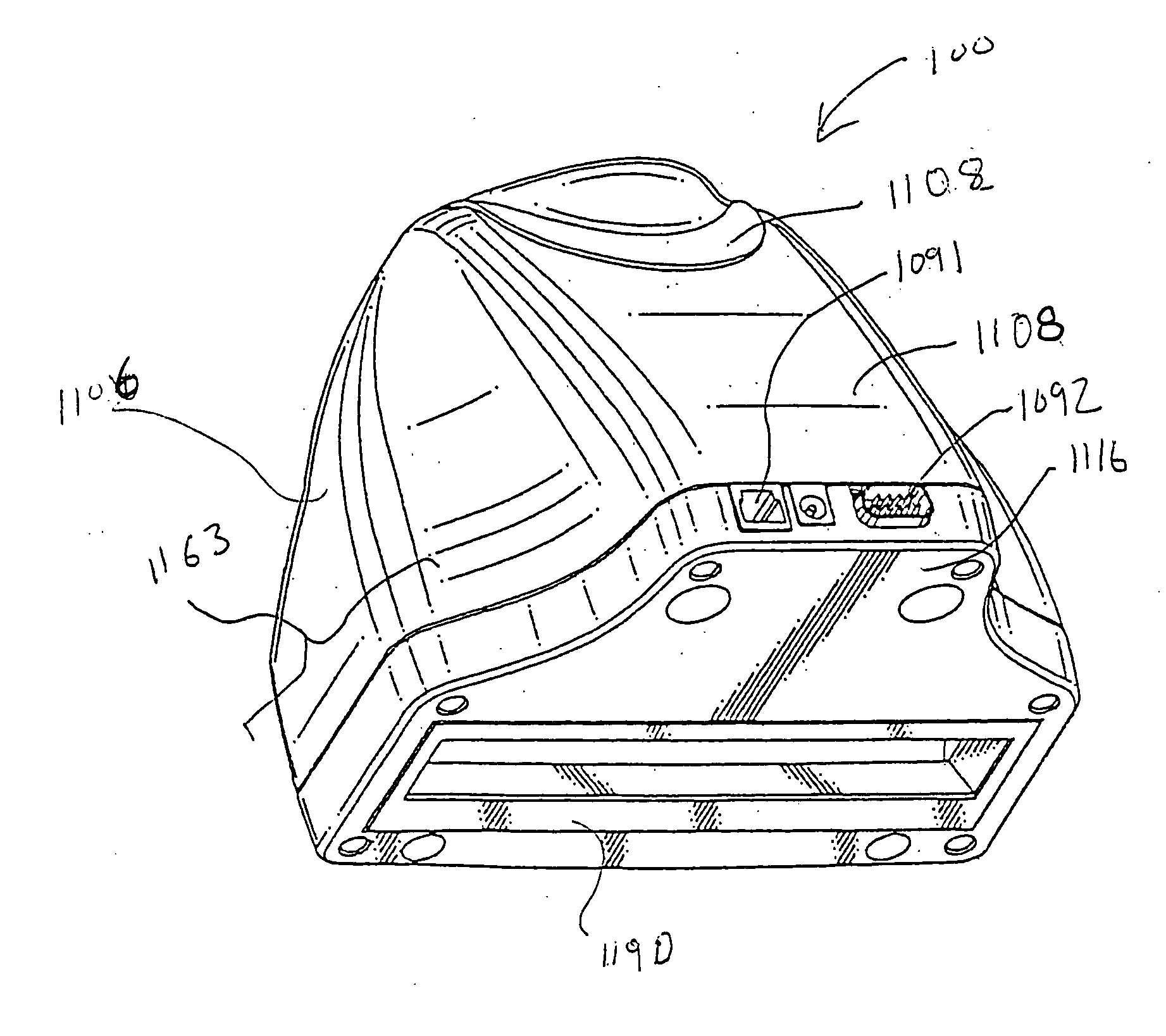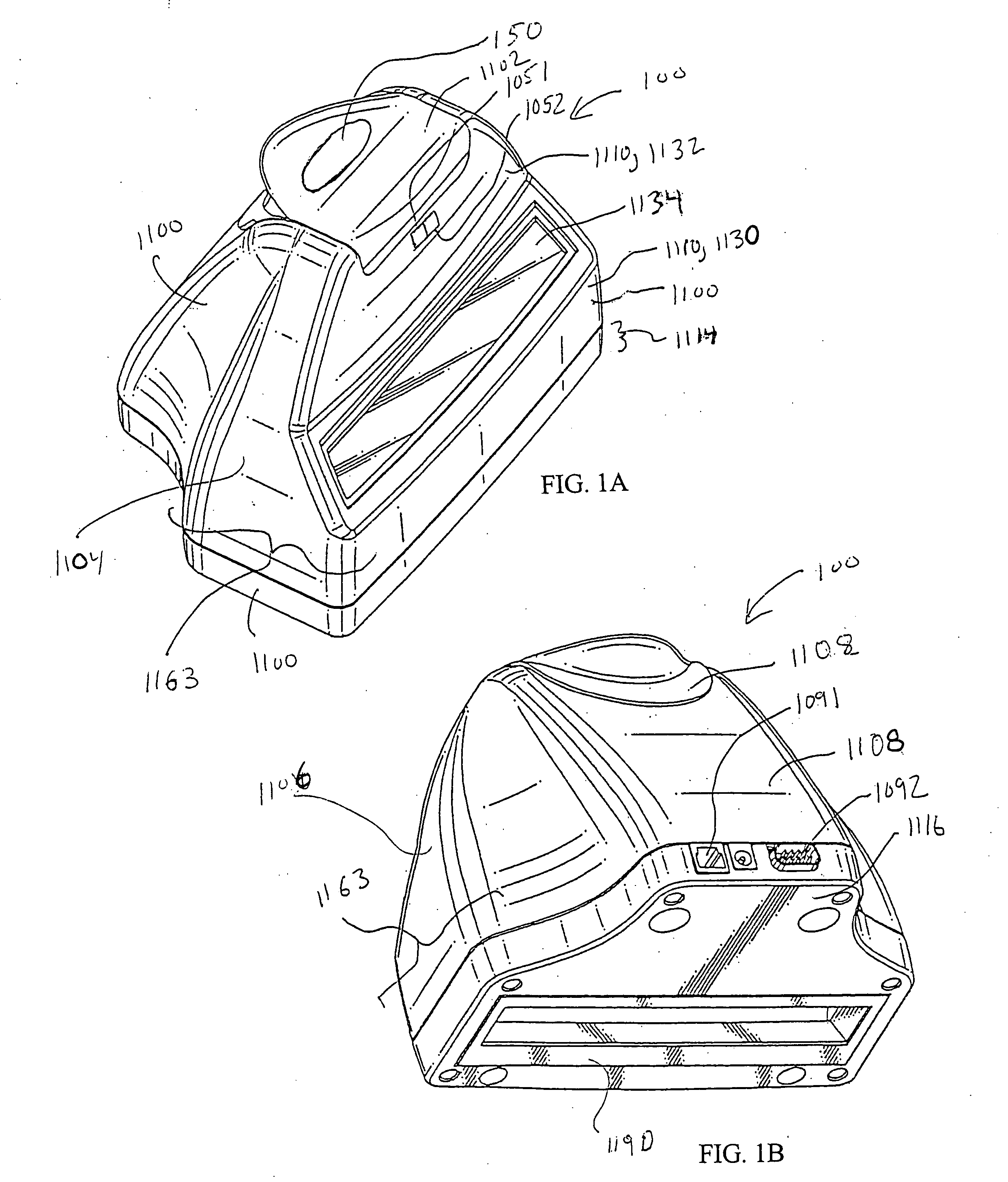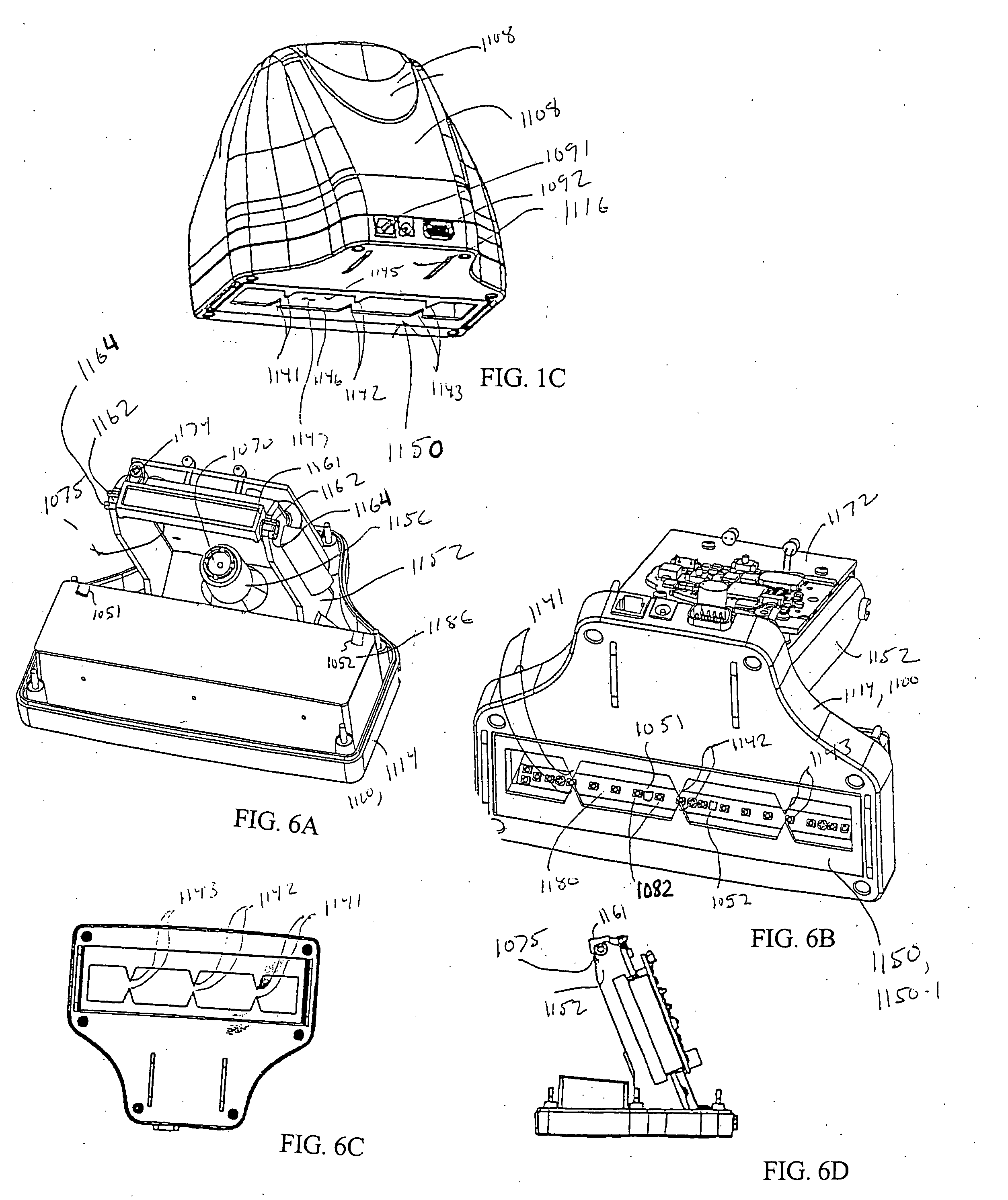Device and system for verifying quality of bar codes
a bar code and verification system technology, applied in the field of optical readers, can solve the problems of affecting the capacity of a bar code symbol to be decoded by a reader, affecting the reading capacity of the bar code symbol, and unreadable bar codes
- Summary
- Abstract
- Description
- Claims
- Application Information
AI Technical Summary
Benefits of technology
Problems solved by technology
Method used
Image
Examples
example 1
[0085] An under sampled signal is processed. The initial bar code data prior to sampling is represented in the waveform diagram of FIG. 3B. The waveform of FIG. 3B is then sampled with sample spacing of Period2. The waveform diagram presented in FIG. 3B is a scan reflectance profile in which image data sample values are expressed in terms of ratio to maximum values. In the present example, a larger number corresponds to a higher reflectance, i.e., white is high. The sampled bar code data is shown in FIG. 3C with each sample point noted.
[0086] A sinc function is given by eq. 1-1 below, wherein a functional definition of the sinc function is conditional to avoid the singularity at 0. sinc(x):=if [(x)=0,1,sin (π·x)π·x](eq. 1-1)
[0087] A waveform diagram wherein values generated in accordance with the sinc function given by eq. 1-1 is presented in FIG. 3D. It is seen from the waveform diagram of FIG. 3D that the transfer function given by eq. 1-1 exhibits a decay such that hund...
example 2
[0094] An imaging lens 1070 of device 100 in an embodiment subject to analysis exhibits an approximately linear MTF fall off with spatial frequency. This MTF profile for a custom singlet such as might be used in this product is shown in FIG. 4B. This profile was created using the optics design program ZEMAX from the ZEMAX Development Corporation. The approximately linear MTF fall off of the lens results in reduced optical resolution and edge contrast at the higher spatial frequencies. The present custom lens has an MTF of approximately 71% at 20 cycles per mm in imager space. This optical pattern is imaged on a one dimensional CCD image sensor converting the optical representation of the bar code pattern under test to an electrical waveform. In an analogous fashion, the electrical signal exhibits an approximately linear fall off with frequency in the electrical domain.
[0095] An EAN128 999999 / R1 symbol is sampled by capturing a 1D frame of image data. The file length of the input si...
PUM
 Login to View More
Login to View More Abstract
Description
Claims
Application Information
 Login to View More
Login to View More - R&D
- Intellectual Property
- Life Sciences
- Materials
- Tech Scout
- Unparalleled Data Quality
- Higher Quality Content
- 60% Fewer Hallucinations
Browse by: Latest US Patents, China's latest patents, Technical Efficacy Thesaurus, Application Domain, Technology Topic, Popular Technical Reports.
© 2025 PatSnap. All rights reserved.Legal|Privacy policy|Modern Slavery Act Transparency Statement|Sitemap|About US| Contact US: help@patsnap.com



